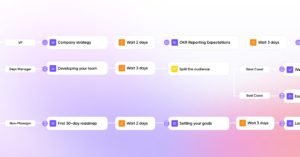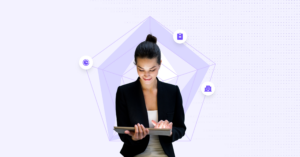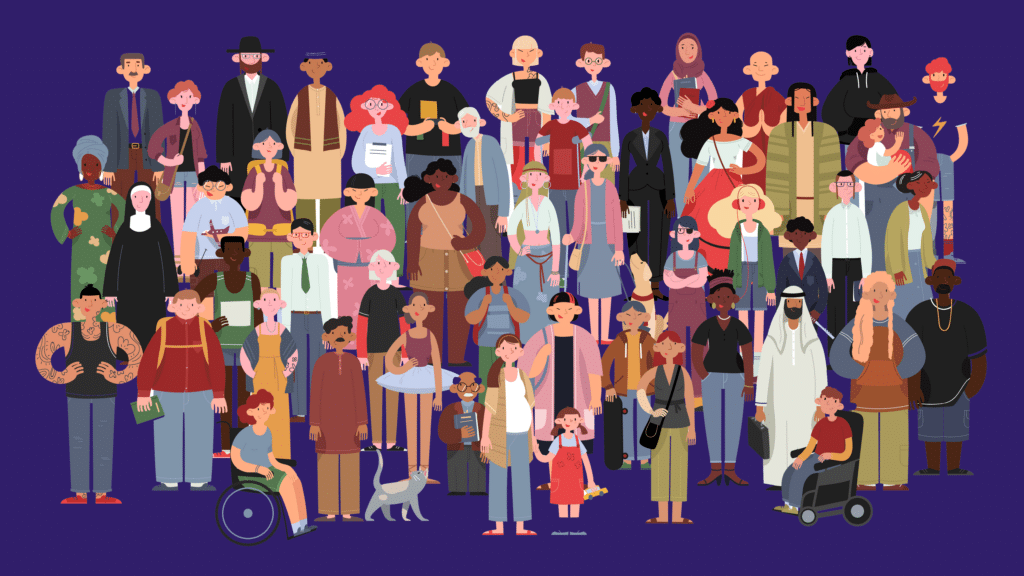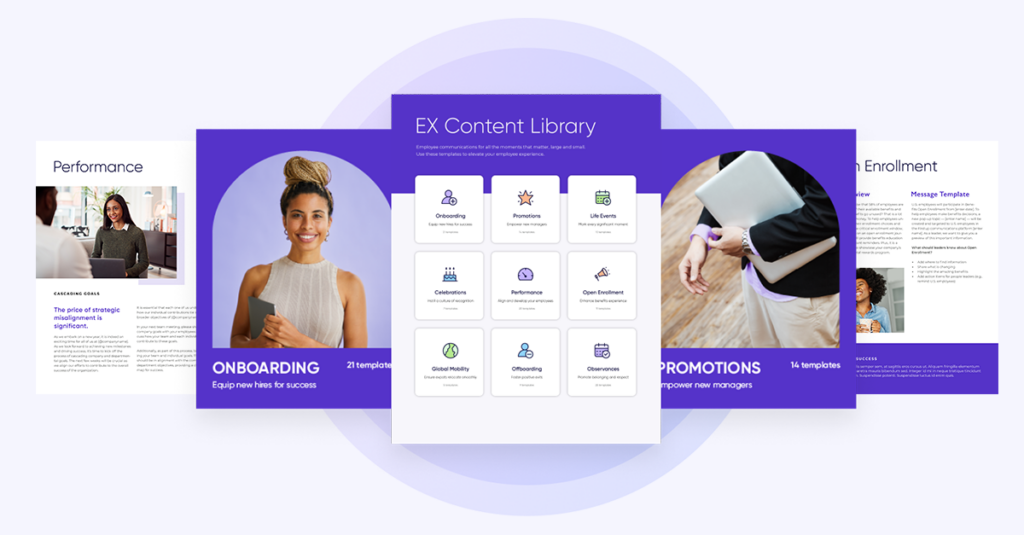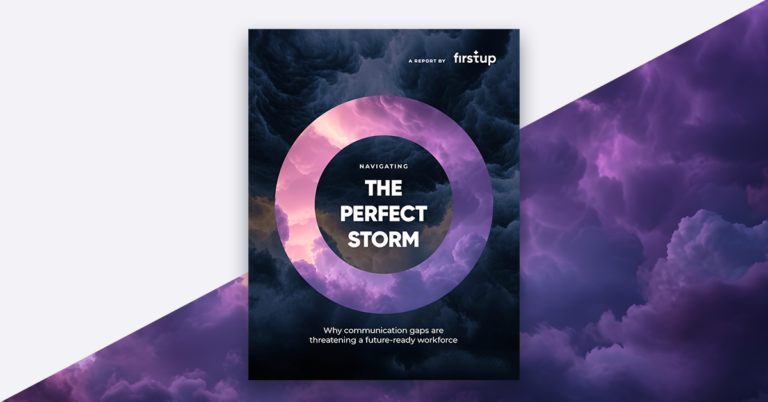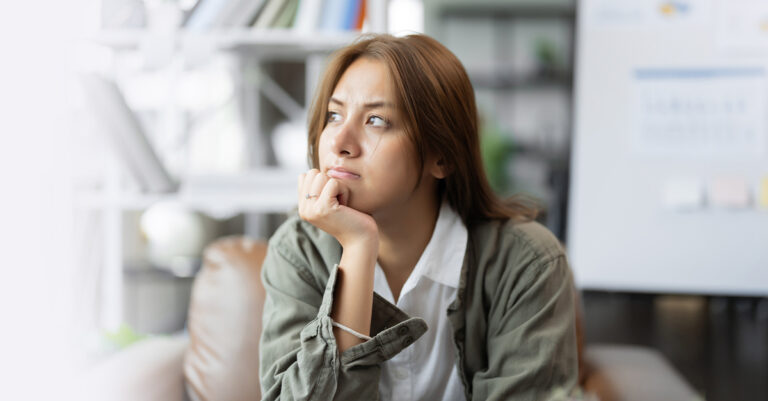The ability to use and understand language is one – if not the – most important tool we humans have at our disposal. In order for language to be successful, it must speak to the audience for which it is intended. And inclusive language, defined as “language that avoids the use of certain expressions or words that might be considered to exclude particular groups of people” by Dictionary.com, gives us humans the ability to connect, build relationships, and facilitate understanding while acknowledging diversity and equity.
While it has always been important to be inclusive, it’s now more important than ever to use inclusive language principles in both our work and personal lives. It creates environments where everyone feels valued, welcomed, and heard. Because so many different groups of people have been discriminated against for years, changing how we speak with each other shows an effort in tearing down marginalization and judgment to better ourselves and our communities.
This can be especially true at work, where (often remote) coworkers interact with peers outside of their “regular” social groups who may be different from themselves. Just noting differences isn’t enough; we must work to build an inclusive workforce that ensures every worker feels welcomed and treated with respect and dignity. A lack of understanding and inclusivity amongst team members can only hurt an organization, so it’s important to truly understand what inclusive language is and how we can all be better at using it.
“Millennial and Gen Z professionals are avoiding companies without a diverse workforce, clear promotion track, and a commitment to confronting systemic racism in their ranks.”
Washington Post, 2021
With that in mind, we wanted to put together an inclusive language glossary that HR departments, internal communicators, and leaders can share with their workforce in order to prioritize DEI (diversity, equity, and inclusion) and avoid discrimination. This is far from a definitive list, but it’s a good starting point to open a conversation about using inclusive language in your workplace.
Diversity, equity, and inclusion glossary
Ableism – Discrimination against people with mental and/or physical disabilities; social structures that favor the able-bodied.
Accessibility – The term for making a facility usable by people with physical disabilities. This includes entry ramps, raised-letter signage, and self-opening doors.
Acculturation – A process of social and psychological assimilation to a different culture, typically the dominant one.
Ageism – Discrimination against individuals because of their age. Commonly based on stereotypes.
Agender – A person with no or very little connection to a traditional gender binary, or someone who sees themselves as existing without gender.
Ally – Someone who makes the effort to recognize their privilege and works to better understand marginalized groups and takes a stand against oppression of said groups.
Anti-Racist – A person who supports antiracist policies through their actions or expresses antiracist ideas that racial groups are equals and do not need development.
Anti-Racism – The work of actively opposing racism by advocating for changes in political, economic, and social life.
Asexual – An umbrella term used to describe people who do not experience sexual attraction. Not the same as celibacy.
Bias – A positive or negative inclination towards a person, group, or community, especially one that interferes with impartiality.
Bigotry – Unreasonable or irrational belief in negative stereotypes and prejudices about other groups of people while exalting one’s own group.
Biphobia – Having fear, hatred, or intolerance of persons who identify as bisexual.
BIPOC – The term referring to “Black and/or Indigenous People of Color.”
Biracial – Used to describe a person who identifies as being of two races, or whose parents are from two different races.
Cisgender (or CIS) – Someone who identifies with the gender that they were assigned at birth.
Classism – Biased attitudes or institutional practices that justify the unfair treatment of groups or individuals based on socioeconomic class.
Cultural Identity – The identity or feeling of belonging to a group based on nationality, ethnicity, religion, social class, generation, locality, or other types of social groups that have their own distinct culture(s).
Cultural Fluency – The ability to understand and engage with people from other cultures.
Disability – The term used to describe individuals with mental or physical impairment which has an effect on their ability to carry out daily activities. “Person with a Disability” is a more inclusive term to use, rather than “Disabled Person”.
Disablism – Promoting discriminatory or oppressive unequal treatment based on the belief that disabled people are inferior to others.
Discrimination – Actions and/or behaviors that favor certain individuals or groups over another based on race, gender, sexual orientation, social class, physical ability, religion, age, and other categories which often begin with negative stereotypes.
Equality – Typically defined as treating all individuals the same and giving everyone access to the same opportunities.
Ethnicity – A common identity that divides people into smaller social groups based on characteristics such as ancestry, language, culture, nation, or region of origin.
Exclusion – Leaving someone out based on their differences, which can be related to age, race, gender, sexual orientation, disability, or any other social group.
Gay – An umbrella term for people who are attracted sexually and emotionally to other people of the same sex. Most commonly refers to a man who has a romantic and/or sexual orientation towards other men.
Gender – A term used to describe socially constructed roles, behaviors, activities, and attributes that society considers “appropriate” for a particular sex to perform.
Gender Dysphoria – A feeling of discomfort or distress that may occur in people whose gender identity differs from the sex assigned to them at birth (by way of anatomy).
Gender Fluid – A person whose gender identity (the gender they identify with most) is not fixed and/or static.
Gender Identity – Refers to how a person sees themselves in terms of their gender, not usually outwardly visible to others.
Gender Non-Conforming (GNC) – A person who does not adhere to society’s gender norms. (Presentation, behavior, roles, or expectations.)
Heterosexism – The belief that heterosexuality is superior or “normal” compared to other forms of sexuality or sexual orientation.
Hidden Bias – Refers to the negative associations that people unknowingly hold which affect a person’s understanding, actions, or decisions unconsciously as it relates to people from different groups. Also known as Unconcious or Implicit Bias.
Homophobia – A fear of people who are not heterosexual which can often result in offensive or discriminatory action against a person because they are gay, lesbian, bisexual, transgendered, queer-identified, or because they are perceived to be.
Inclusion – Authentically bringing traditionally excluded individuals and/or groups into processes and decision/policymaking in a way that shares power.
Institutional Racism – Refers to the ways institutional practices and policies create different outcomes for different racial groups. The policies may never target any specific racial group, but their effect is to create advantages for whites and oppression and disadvantage for people of color. Often used interchangeably with Structural Racism.
Intersex – A term used to describe an individual who may have the biological attributes of both sexes. They may identify as male, female, or non-binary.
Lesbian – A woman whose primary sexual attraction is to other women.
LGBTQ/QIA – The acronym for “Lesbian Gay Bisexual Transgender Queer (Questioning Intersex Allies).”
Marginalized/Marginalization – A social process by which individuals or groups are (intentionally or unintentionally) disempowered by being denied access to power and resources, and/or not allowing for that individual or community’s voice, history, and perspective to be heard.
Microagressions – Term that describes everyday (verbal, nonverbal, and environmental) behavior that communicates hostile, derogatory, or negative messages to target a group, either intentionally or unintentionally, of particularly culturally marginalized people.
Neurodiversity – The idea that there is diversity in how individuals’ brains are wired and work and that these neurological differences should be valued in the same way we value any other human variation. Term use includes people with Autism, Dyslexia, ADHD, Dyscalculia, Tourette Syndrome, and other neurological differences.
Non-Binary – An adjective term describing a person who does not identify as exclusively male or female. Non-binary people may identify outside the gender binary categories.
Oppression – A system of supremacy and discrimination for the benefit of a limited dominant or privileged group at the expense of targeted, less privileged groups.
Pansexual – A term used to describe a person who feels they are sexually, emotionally, and spiritually capable of falling in love with a person regardless of where they fall on the gender or sexuality spectrum.
Patriarchy – Refers to a social system and institution where men have primary power and authority.
Prejudice – An prejudgment or unjustifiable attitude (usually negative) about a group or its individual members.
Pronouns – In the context of diversity, a pronoun is a word or phrase that individuals use to represent their gender identity. You cannot always know what pronoun (she/her, he/him, they/them) someone uses by looking at them.
Race – Refers to individuals as part of a distinct group defined by their physical characteristics and some cultural and historical commonalities.
Racism – The oppression of people or groups (usually non-white) because of their color, race, nationality, or origin. It generally involves actions resulting from bigotry or the thinking a particular race is inferior.
Rainbow Washing – When an organization engages in practices that are harmful to the LGBTQ+ community while outwardly showing support for the same community.
Segregation – A systemic separation of people into racial or ethnic groups during the activities of daily life.
Sexual Orientation – The direction of one’s sexual, emotional, physical, or romantic attraction toward the same gender, opposite gender, or other genders.
Stereotype – The over-generalized belief that all individuals who belong to a designated group or category are the same and labeling them.
Transgender – An umbrella term for people whose gender identity and/or gender expression differs from their sex assigned at birth and societal expectations of their physical sex. Transgender or “trans” does not imply any form of sexual orientation.
Transphobia – The fear or hatred of individuals perceived to be transgender and/or transsexual, including the denial/refusal to accept their gender identity.
White Privilege – Refers to the unearned set of advantages, privileges, benefits, and choices given to people based solely on being white.
White Supremacy – The idea or ideology that the ideas, beliefs, and actions of white people are superior to those of People of Color. A historically-based, institutionally-perpetuated system of oppression of continents, nations, and people by white people and nations of the European continent for the purpose of maintaining and defending a system of wealth, power, and privilege.
Conclusion
If an organization wants to truly empower its employees to be inclusive, it needs to be knowledgeable about the language it uses in its communications. Prioritizing DEI at your company shows an increasingly diverse workforce that you care about their employee experience.
“76% of job seekers and employees today report that a diverse workforce is an important factor when evaluating companies and job offers.”
Glassdoor Survey
Companies must make sure all employees feel included and respected regardless of their age, gender, race, religion, sexual orientation, physical conditions, cultural backgrounds, or county of origin. And as has been proven, companies with a diverse workforce attain 19% higher revenue than companies without, on account of greater innovation!
Some additional things to keep in mind:
- Consider all the language that is used in internal and external communication, sales decks, social media, websites, marketing materials, etc.
- In addition to promoting diversity within your existing staff, increase efforts to recruit a more diverse workforce.
- It can be hard to break life-long habits of non-inclusive language, but it can be done with a commitment to learning.
- Respect privacy. Not everyone will want to discuss gender, sexual orientation, etc. about themselves
- If you aren’t sure how to refer to someone, just ask. This is a much better option than fumbling through excuses or avoiding the topic altogether.
- When a mistake is made in the language or phrases used to communicate, just apologize, correct the mistake, and move on.
To retain a diverse workforce, you need to invest in building an inclusive culture. Download our comprehensive DEI playbook 7 plays to launch your culture of inclusion to help you do it.
Download PDF

